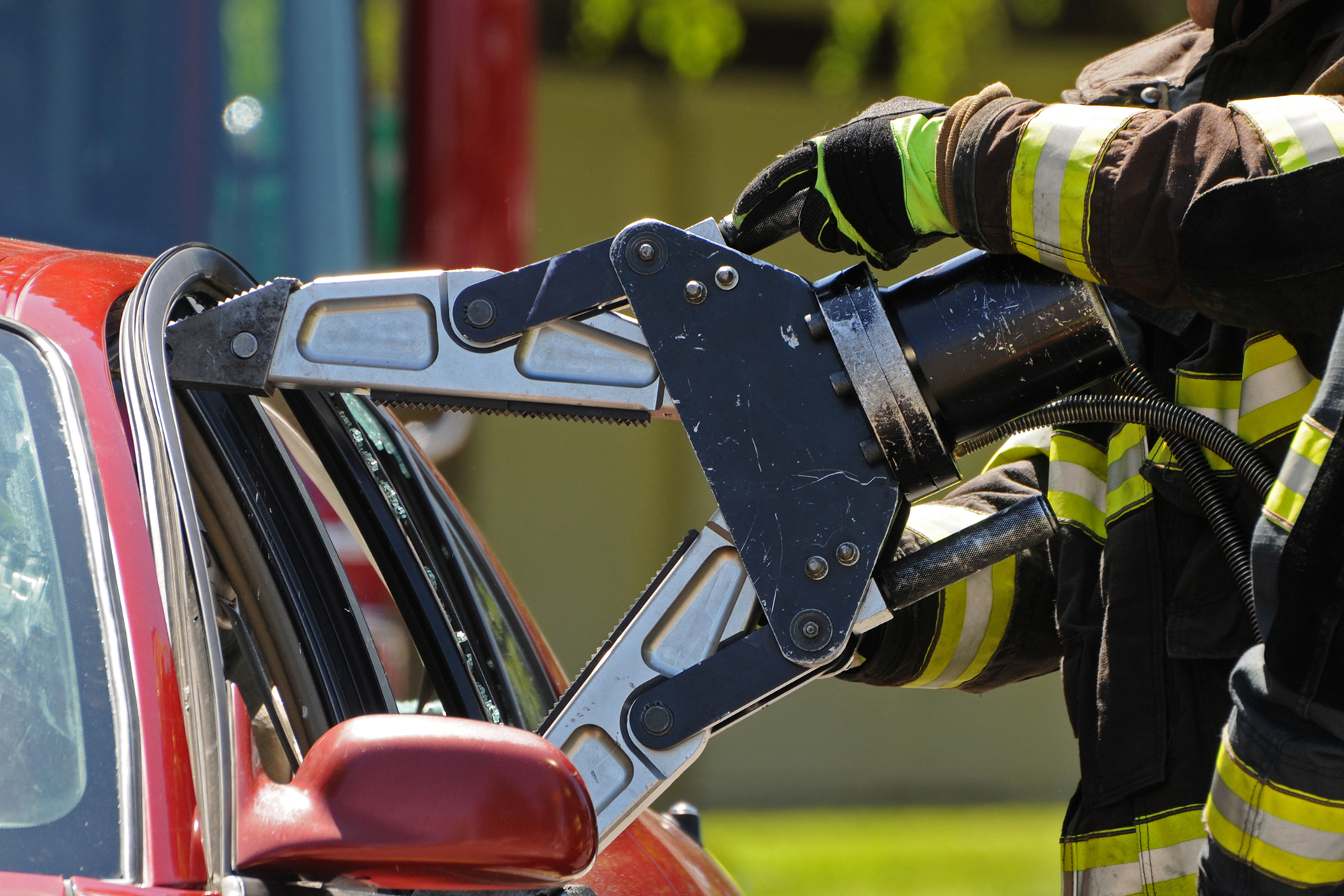

You’ve probably seen the “Jaws of Life” in action while driving past a roadside accident. If not, you’ve likely heard about the famous tool in one way or another that’s typically used to rip open all sorts of mangled metal. But if you’ve ever wondered how it works, it’s a fairly simple machine despite its intimidating looks.
The “Jaws of Life” is used indeterminately for pretty much any type of heavy-duty tool that acts like a pair of scissors, cutter, spreader, or ram-device aimed at slicing and dicing through most automotive metals. In reality, the term “Jaws of Life” is actually trademarked by Hurst—a company known for its manufacturing of heavy-duty hydraulic equipment—but as mentioned, it’s applied colloquially to any sort of similar device or tool used specifically in this practice.




If you’ve ever wondered how crews set up the tool for use on the scene, or how they work, the video below of the East Contra Costa Fire Protection District rescuing an injured driver trapped in a Foxbody Ford Mustang provides a solid glimpse. At first, it looks like a daunting piece of machinery that’s capable of some pretty gnarly things, but in reality, it’s not that harrowing to operate.

Most are typically operated by a hydraulic pump driven by its own onboard generator pressurizing heavy-duty lines with around 10,000 psi. When actuating the “Jaws of Life,” it translates to anywhere in the neighborhood of 12,000-16,000 pounds worth of spreading force, 14,000-15,000 worth of pulling force, and a spreading distance of up to three feet depending on the machine. That also works out to around 12,000-14,000 pounds of cutting force at the scissor blade center, or up to 23,000 pounds of cutting force at the notch. These numbers and figures can vary according to the grade of the unit.
Handling the “Jaws of Life” is slightly cumbersome. Most units weigh anywhere between 40 to 55 pounds and often require a lot of upper body strength to maneuver the big devices around a vehicle. More often than not, fellow crew members are there to provide assistance in positioning the unit, typically for more leverage or support. Training as a junior scout for my local rescue squad during my teenage years, I was given the chance to haphazardly convert a beater first-generation S10 Chevrolet Blazer into a convertible and sample what this tool was like. To have the sort of power to cut through metal like a Hattori Hanzo katana through any number of amorphous bad guys in Kill Bill. It was especially satisfying for my teenage self living out my mecha fantasies. But for those using the “Jaws of Life” in the field to rescue trapped motorists against the clock, that sort of firepower is a necessity.
There’s one main three-directional rocker switch to operate the “Jaws of Life,” with the center position being neutral. Moving the switch in either direction actuates an internal piston mechanism. Holding the switch to the left typically opens the scissor mechanisms, which doubles as a spreading device. While holding it to the right closes them and allows the machine to act as cutters.
Still, as daunting of a machine it may be, it’s incredibly capable and easy to use when you know what you’re doing. And that’s the most important characteristic needed for situations where every single second counts.